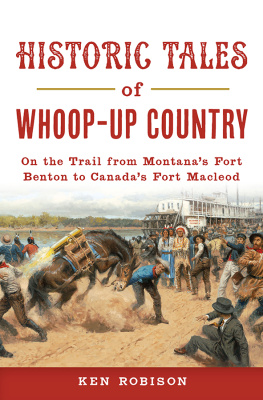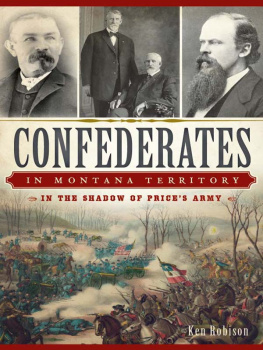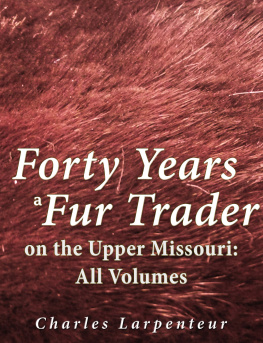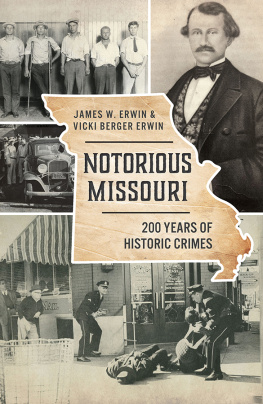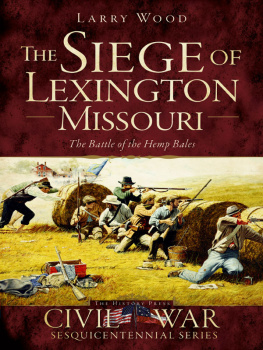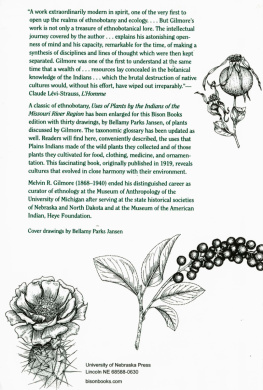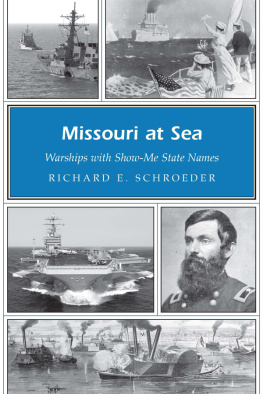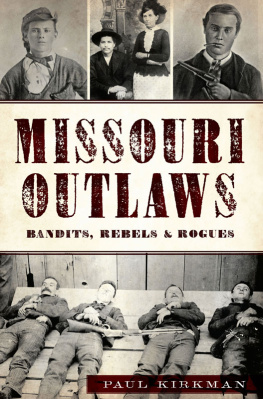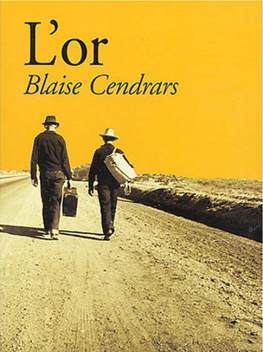Published by The History Press
Charleston, SC
www.historypress.net
Copyright 2016 by Ken Robison
All rights reserved
First published 2016
e-book edition 2016
ISBN 978.1.43965.786.7
Library of Congress Control Number: 2016938314
print edition ISBN 978.1.46713.562.7
Notice: The information in this book is true and complete to the best of our knowledge. It is offered without guarantee on the part of the author or The History Press. The author and The History Press disclaim all liability in connection with the use of this book.
All rights reserved. No part of this book may be reproduced or transmitted in any form whatsoever without prior written permission from the publisher except in the case of brief quotations embodied in critical articles and reviews.
Contents
PART I. STEAMBOAT OPERATIONS ON THE MISSOURI RIVER:
CIVIL WAR CHALLENGES
1. Steamboat Operations on the Upper Missouri:
The Civil War Years and Beyond
2. Quantrill Guerrillas on the Missouri River:
Capturing the Sam Gaty
3. Capturing a Steamboat during the Civil War:
Private John C. Lilly Reveals the Plan
4. King of the Upper Missouri River:
The Legend of Captain Grant Marsh
5. A Trip to the Gold Regions of Montana:
Impressions of Rosalie Ruthren
6. Going to the States on the Legendary Steamboat Far West:
Travels with Martha Edgerton Rolfe
PART II. ADVENTURERS ON THE UPPER MISSOURI:
GOING TO THE MOUNTAINS
7. From Adventures on the Upper Missouri to
Combat in Civil War Kentucky: John Mason Brown
8. From Boy Warrior to Frontier Scout in War and Peace:
The Service of Charles K. Bucknum
9. Civil War Soldier and Proprietor of Fort Bentons Crown Jewel:
Stephen S. Spitzley
10. When Myth Becomes a Reality:
Milk River Pioneer William Bent
11. From Drummer Boy to Ace Photographer:
Dan Dutro on the Upper Missouri
12. From Army Scout to Teddys Tennis Cabinet:
Boldly Strode Yellowstone Kelly
PART III. CRADLED IN DIXIE:
ON A HIGHWAY FROM SLAVERY TO OPPORTUNITY
13. On Being a Black American in Territorial Fort Benton:
A Modest Beginning
14. Black Steamboatmen on the Upper Missouri:
From Slaves to Free Men and Women
15. From Slavery to Campaigning with Colonel Custer:
The Exceptional Lives of Mary and Maria Adams
16. Barber to the Presidents Joins Maria Adams in Frontier Montana:
Duke and Maria Dutriueille
17. The True Story of the Mother and Father of Belt, Montana:
Mattie Bell Bost and John K. Castner
18. From Slave to Stampeder... de Gulch Am a Booming:
Millie Ringgold Keeps the Faith
19. Slave to Servant, a Family Tradition:
The Life of Adeline Hoffman
PART IV. MEMORABLE CHARACTERS AND OUTLAWS:
ROAMING THE MONTANA FRONTIER
20. From Civil War Glory to Indian Wars Disgrace:
Major Guido Ilges
21. From a Civil War Prison to the Montana Legislature:
Captain Samuel A. Swiggett
22. Rising from Private to General A Man of Iron Nerve:
Charles S. Warren
23. A Persistent Montana Legend:
Jesse and Frank James on the Upper Missouri
24. Killing Booth: Everton Conger Tracks Down
Lincolns Assassin
Map of the Territory of Montana in 1865. Drawn by W.W. de Lacy for the use of the first legislature of Montana. Authors collection.
Acknowledgements
Although the Civil War ended in 1865, the impact of that most momentous event in American history continued on the frontier of the newly formed Montana Territory. As Ive roamed the state in conversation about the Civil War and its impact on Montana, I continue to find great interest in our territorial history. As we begin to celebrate the good and the bad of the postCivil War Reconstruction era of the late 1860s and 1870s, Montanas development continued. My special thanks to those who celebrate the history of our Big Sky state, share it with others and buy books in local bookstores.
As historian at the Overholser Historical Research Center in Fort Benton, I operate in a community immersed in history. As the head of steam navigation on the Missouri River and the birthplace of Montana, Fort Benton has been making history since the mid-1840s. Today, through the River & Plains Society, we operate an impressive museums complex and research center that present the exciting history of this Upper Missouri region from the glacial lakes that formed our terrain to the era of native nations into the fur trade on to exploration and settlement, steamboating, Indian Wars, open range ranching, homesteading and on to todays agricultural environment and cultural tourism in the heart of the Golden Triangle.
A special thanks to eloquent former executive director Randy Morger of the River & Plains Society, Chairman Larry Cook and the Board of Trustees, as well as my colleagues in the Overholser Historical Research Center for dedicating time, effort and wisdom to present our shared history to an international audience.
My thanks to Kathy Mora and the Great Falls Public Library, Megan Sanford and the History Museum and Jan Thompson and the Great Falls Genealogy Society for providing impressive research resources and working environments. Montanas Historical Society continues to make every visit an exciting adventuremany thanks. And a special thanks to Kay Strombo for sharing her impressive research into Civil War Montanans.
For friends and family, I could not have done it without you all.
Introduction
The beauty of the Upper Missouri region continues to inspire all who live or travel through its rugged grandeur. Dramatic events from 1860 to 1862 transformed the Upper Missouri River from the relative isolation of the fur and bison robe trade to the raucous gold rush days that would keep the region in turmoil throughout the Civil War. From the presence of thousands of Native Americans with several hundred white Americans clustered at several trading posts in 1860, to more than sixteen thousand miners and adventurers stampeding from gold strike to strike among the mining camps, the Upper Missouri region that became Montana Territory in 1864 was in turmoil during the Civil War years. This was a transformational moment on the Upper Missouri in the heart of native Blackfeet country.
Fort Benton, the worlds innermost port at the head of steam navigation on the Missouri River, transformed from a remote fur- and robe-trading post into the heart of a growing commercial empire that, within a decade, would extend from the Dakotas to the Idaho mines and from later Wyoming northward through the British possessions that would later compose Alberta and Saskatchewan provinces.


